 Indian FTR 1200 - Owner's Manual > Shifting Gears
Indian FTR 1200 - Owner's Manual > Shifting Gears
WARNING Forced shifting (with clutch engaged) could cause damage to the engine, transmission and drive train. Such damage could cause loss of control, which could result in serious injury or death.
Always pull the clutch lever fully toward the handlebars to disengage the clutch before shifting gears.
Your motorcycle is equipped with a six-speed transmission.
Neutral is located between first and second gear.

Press downward on the toe lever to shift to a lower gear. Lift upward on the toe lever to shift to a higher gear. Release the clutch lever after each gear shift.
Shifting to neutral is easiest if the motorcycle is rolling slowly. To shift from first gear to neutral, gently lift the toe lever a half stroke.
TIP The transmission is in neutral if you can move the motorcycle forward or rearward freely without disengaging the clutch. If the ignition switch is in the ON position, the neutral indicator illuminates when the transmission is in neutral.
SHIFTING GEARS WHILE STATIONARY
To locate neutral when the motorcycle is stationary, use one of the following techniques to load and unload the transmission:
1. With the clutch disengaged (lever pulled inward), shift into neutral while rocking the motorcycle forward and rearward.
2. With the transmission in first gear, gently release the clutch until it just begins to engage. Apply upward pressure on the toe lever and quickly pull the clutch inward.
NOTE There is a Neutral indicator light on the instrument cluster.
SHIFTING GEARS WHILE DRIVING
WARNING Downshifting improperly could cause transmission damage, loss of traction and loss of control, which could result in serious injury or death.
- Reduce speed before downshifting. Always downshift within the recommended shift points.
- Use extreme caution when downshifting on wet, slippery or other low traction surfaces. Release the clutch lever very gradually in these conditions.
- Avoid downshifting in a curve. Downshift before entering the curve.
1. Start the engine. 2. With the engine at idle speed, apply the front brakes.
3. Disengage the clutch (pull the clutch lever fully toward the handlebar).
4. Push the toe lever downward until you feel it stop in first gear.
5. Release the brake lever.
6. Simultaneously release the clutch lever while opening the throttle (rolling the throttle control grip rearward) in one smooth motion. As the clutch begins to engage, the motorcycle will move forward.
7. To shift to a higher gear, accelerate smoothly to the recommended shift point. See Recommended Shift Points chart.
With a quick motion, simultaneously close the throttle completely and disengage the clutch. Raise the toe shift lever until you feel it stop at the next gear. Simultaneously release the clutch lever and open the throttle in one smooth motion.
8. To shift to a lower gear (downshift), simultaneously pull the clutch lever toward the handlebar and close the throttle. Move the toe shift lever downward until you feel it stop at the next gear. Simultaneously release the clutch lever while opening the throttle.
TIP Within the recommended speed ranges (see Recommended Shift Points chart), you can downshift to slow the motorcycle or to increase power. You may want to downshift when climbing a hill or passing. Downshifting also helps to decrease speed when combined with closing the throttle.
RECOMMENDED SHIFT POINTS

BRAKING
Always allow sufficient stopping distance so that brakes can be applied gradually.
TIP Applying slightly more front brake than rear brake generally provides the best braking performance.
1. To slow the motorcycle with the brakes, close the throttle and apply the front and rear brakes gradually.
TIP When the anti-lock brakes engage during a braking event, the rider will feel pulsing at the brake lever. Continue to apply steady pressure to the brakes for the best stopping performance.
2. As the motorcycle slows, disengage the clutch, or downshift each time vehicle speed reaches a downshift point.
WARNING Braking improperly could result in loss of control, which could result in serious injury or death. Avoid braking abruptly. Always apply the brakes gradually, especially on wet, slippery or other low traction surfaces. Avoid braking in a curve or turn. Bring the motorcycle to the upright position before applying the brakes.
ACCELERATING
Accelerate by opening the throttle (rolling the throttle control grip rearward). For even acceleration, open the throttle with a smooth, continuous motion. When you reach the recommended speed for upshifting, shift up one gear.
WARNING Accelerating abruptly could cause your body to shift rearward suddenly, which could result in loss of control. Accelerating abruptly could also cause loss of control on low traction surfaces.
Loss of control could result in serious injury or death. Always accelerate gradually, especially on wet, slippery or other low traction surfaces.
STOPPING THE ENGINE
Before stopping the engine, bring the motorcycle to a complete stop. Shift to neutral or disengage the clutch.
WARNING Stopping the engine with the transmission in gear while the motorcycle is moving could cause loss of rear wheel traction or engine and transmission damage, which could cause loss of control and serious injury or death. Always stop the engine after the motorcycle is fully stopped and the transmission is in neutral.
If the engine stops unexpectedly while the motorcycle is moving, pull the clutch and guide the motorcycle to a safe location off the road and away from traffic. Turn the ignition switch off.
1. When fully stopped, shift into neutral.
2. Move the engine stop/run switch to the STOP position.
3. Turn the ignition switch off. Remove the ignition key.
See also:
 Indian FTR 1200 - Owner's Manual > Engine Break-in
Indian FTR 1200 - Owner's Manual > Engine Break-in
The engine break-in period for your motorcycle is the first 500 miles (800 km) of operation. During this break-in period, critical engine parts require special wear-in procedures so they seat and mate properly. Read, understand and follow all break-in procedures to ensure the long-term performance and durability of your engine.
 Indian FTR 1200 - Owner's Manual > Using Cruise Control
Indian FTR 1200 - Owner's Manual > Using Cruise Control
The cruise control switches are located on the left hand control. Read this section and understand how to safely operate this feature before using the cruise control. Cruise control can be activated and adjusted from the left-hand control using the Cruise Control Switch.
 Ducati Scrambler
Ducati Scrambler Fantic Caballero 500
Fantic Caballero 500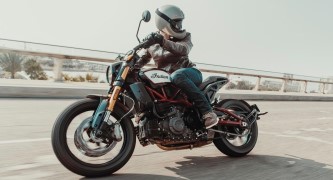 Indian FTR 1200
Indian FTR 1200 Moto Guzzi V85 TT
Moto Guzzi V85 TT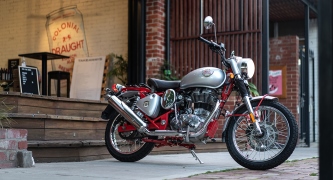 Royal Enfield Bullet Trials Works Replica
Royal Enfield Bullet Trials Works Replica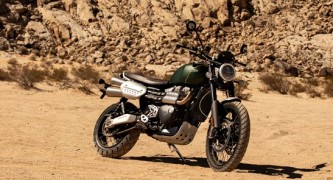 Triumph Scrambler 1200 XE
Triumph Scrambler 1200 XE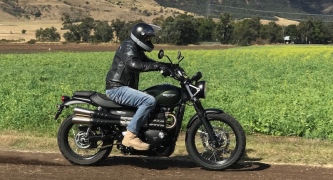 Triumph Street Scrambler
Triumph Street Scrambler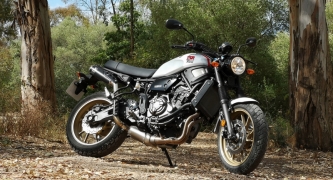 Yamaha XSR700
Yamaha XSR700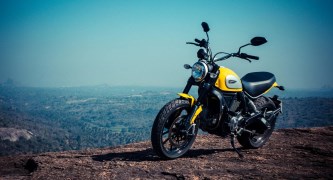 Ducati Scrambler 800
Ducati Scrambler 800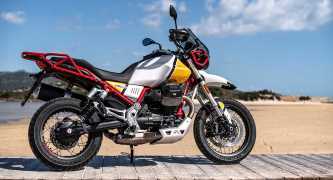 Moto Guzzi V85 TT
Moto Guzzi V85 TT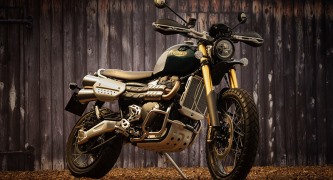 Triumph Scrambler 1200 XC
Triumph Scrambler 1200 XC